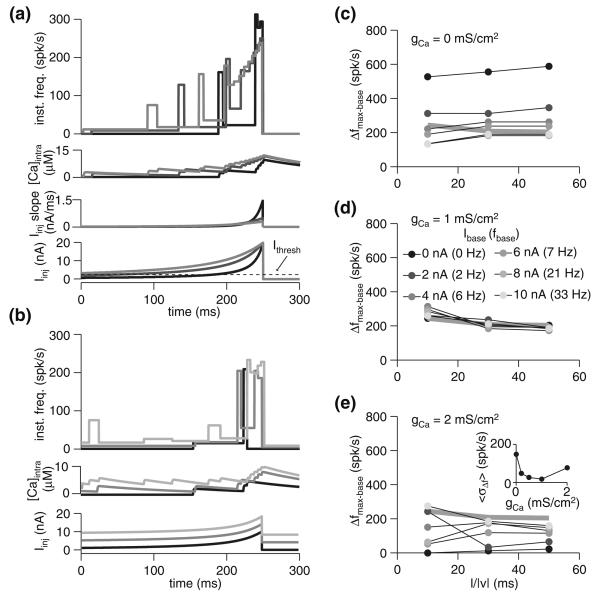Fig. 5.
Spike-frequency adaptation reduces the range of responses to current injections with intensity profiles mimicking visual looming. a Instantaneous frequency and calcium response of the model with gCa = 1 mS/cm2 for current injections mimicking looming stimuli with various l/|ν| values. (Iinj(t) governed by θ(t), Eq. 4). All steps were from 0 to 20 nA (i.e., Ibase = 0). From lightest to darkest, simulated l/|ν| was 50, 30, and 10 ms. The temporal profile of injected current is depicted below, with the dotted line indicating the threshold current (Ithresh; ~3 nA). b Instantaneous frequency response of the model with gCa = 1 mS/cm2 for various baseline currents (0, 4, and 8 nA) and steps to 10 nA above baseline mimicking an l/|ν| value of 30 ms. c–e Maximal change in firing frequency (Δfmax−base) for various baseline currents (Ibase; gray scale as indicated in panel d) and simulated l/|ν|. All steps were 10 nA in amplitude at their maximum. The three panels show the response of the model with varying degrees of spike-frequency adaptation: none (gCa = 0 mS/cm2; c), fit to the underlying physiology (gCa = 1 mS/cm2; d), and above the physiological-fit value (gCa = 2 mS/cm2; e). The gray line denotes the response with Ibase = 0 nA and gCa = 1 mS/cm2. The inset in panel d shows response variability (σΔf; see Fig. 2) as a function of gCa

